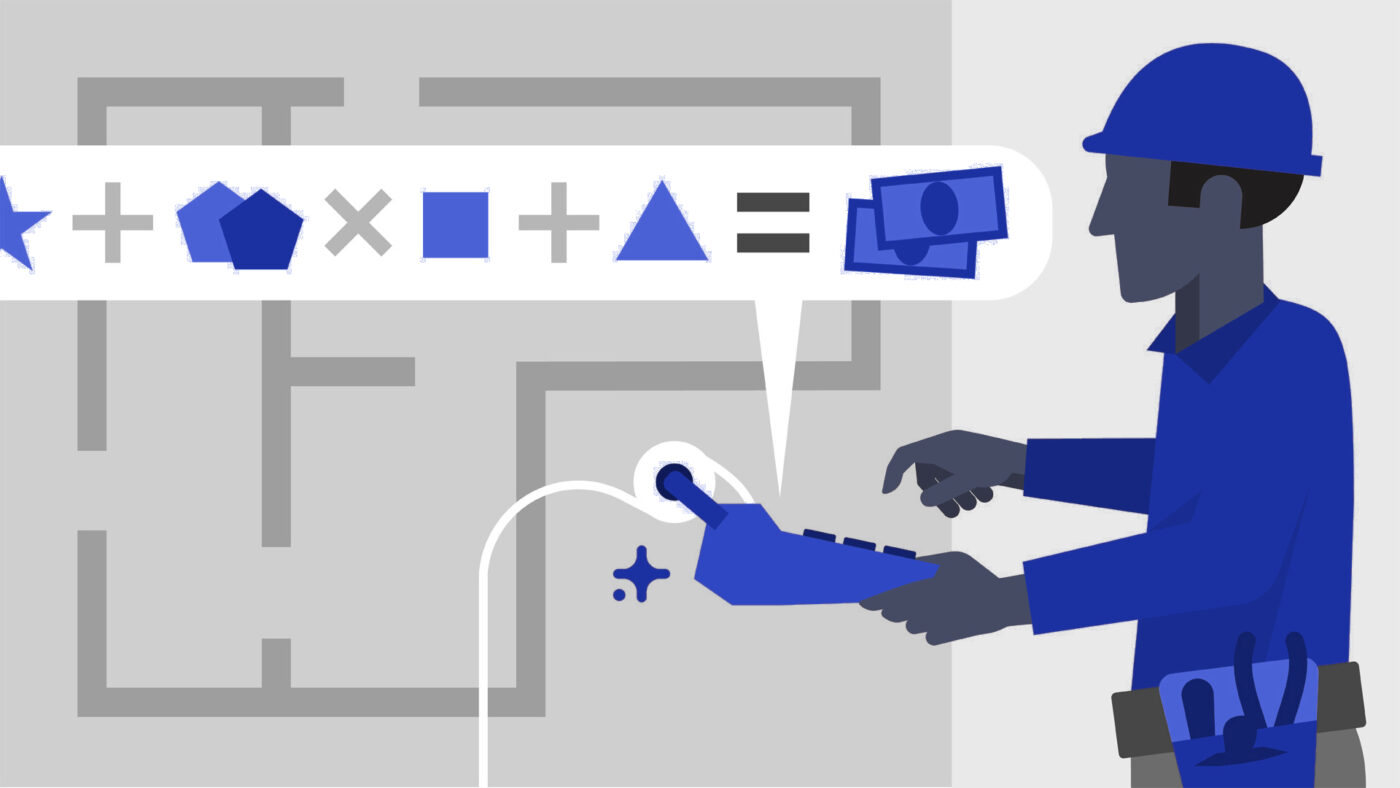Introduction
In the dynamic world of construction, accurate estimation of required materials and resources is of paramount importance. A takeoff, an essential component of this process, forms the foundation for precise and well-informed project management. This comprehensive guide delves into the intricacies of construction takeoffs, elucidating their significance and the advantages of employing digital tools. Furthermore, it provides invaluable tips to ensure accuracy and efficiency in the takeoff process.
What is a takeoff in construction?
A construction takeoff is a critical and methodical procedure that entails identifying, enumerating, and quantifying the materials, labor, and equipment needed for a specific construction project. This thorough exercise is the bedrock of generating precise estimates, which are instrumental in formulating informed decisions related to bidding, budgeting, and allocating resources. A takeoff’s accuracy directly impacts the overall project’s success, including its financial viability and logistical efficacy.
Importance of accurate takeoffs
Accurate takeoffs are the linchpin of successful construction projects, as they influence the financial and logistical dimensions of a project. By ensuring that materials, labor, and equipment estimates are precise, takeoffs contribute to effective communication among stakeholders, such as architects, engineers, and clients. This clarity aids in resource management, preventing cost overruns, schedule delays, and disputes. In essence, accurate takeoffs create an environment of trust and confidence, which is vital for the smooth execution of any construction project.
Benefits of using digital tools for takeoffs
The advent of digital tools for construction takeoffs has had a transformative effect on the industry, streamlining processes and boosting accuracy levels. These state-of-the-art tools facilitate rapid data collection and analysis, reducing the time and effort required for manual takeoffs. Additionally, digital tools enable project teams to collaborate seamlessly, ensuring that all stakeholders have access to the most up-to-date information. This interoperability fosters a more agile environment, where adjustments can be made in real-time to accommodate changes in the project’s scope or design. By adopting digital tools, construction professionals can enhance efficiency, mitigate risks, and improve overall project outcomes.
Preparation for Takeoff
Review project plans and specifications
A thorough examination of project plans and specifications is the first step in preparing for a takeoff. By meticulously reviewing these documents, construction professionals can identify key elements, such as the types of materials, their quantities, and other vital details, which will directly influence the process. This in-depth understanding ensures that all relevant aspects are considered, minimizing the risk of errors and oversights.
Identify types of materials and quantities required
To ensure an accurate takeoff, it is essential to thoroughly analyze the project plans and discern the specific materials and their corresponding quantities needed for the project. This knowledge forms the basis for precise estimation and procurement, enabling optimal resource utilization and preventing wastage, delays, and additional costs.
Determine measurement units
Selecting the appropriate measurement units for each material, be it imperial or metric, is crucial in maintaining consistency and accuracy throughout the process. A uniform approach to measurement units eliminates potential discrepancies, ensuring that all stakeholders are aligned and working with a common understanding.
Establish a list of deliverables
Compiling a comprehensive list of deliverables that encompasses all required materials, equipment, and labor is a critical aspect of takeoff preparation. This list serves as a touchstone during the takeoff process, providing a clear roadmap for resource allocation and ensuring that all necessary components are accounted for. By establishing a detailed list of deliverables, construction professionals can streamline the process and enhance its overall accuracy.
Types of Takeoff
- Count takeoff
A count takeoff entails enumerating discrete items, such as doors, windows, and fixtures, to determine their precise quantities.
- Length takeoff
Length takeoffs involve measuring linear dimensions, such as pipes, wires, or beams, to ascertain their cumulative lengths.
- Area takeoff
An area takeoff calculates the square footage of surfaces, such as walls, ceilings, and floors, by measuring their length and width.
- Volume takeoff
Volume takeoffs determine the cubic dimensions of materials, such as concrete or fill material, by measuring their length, width, and depth.
- Assembly takeoff
Assembly takeoffs quantify preassembled components or systems, such as wall panels or HVAC systems, to facilitate procurement and installation.
- Weight takeoff
Weight takeoffs evaluate the overall mass of materials, such as structural steel, which is often necessary for transportation and lifting purposes.
- Digital takeoff
Digital takeoffs leverage cutting-edge software to automate the takeoff process, enhancing efficiency, accuracy, and collaboration.
Tools for Takeoff
Measuring tools (tape measure, ruler, scale ruler, digital calipers)
The use of various measuring tools, including tape measures, rulers, scale rulers, and digital calipers, is crucial for obtaining precise measurements during the process. These instruments provide different levels of accuracy and functionality, catering to diverse construction elements and ensuring that all measurements are captured with the utmost precision. By employing a range of measuring tools, construction professionals can minimize errors and discrepancies, resulting in a more accurate takeoff.
Estimating software (Excel, Bluebeam, PlanSwift)
Robust estimating software, such as Excel, Bluebeam, or PlanSwift, is indispensable for facilitating efficient data organization, calculations, and analysis. These powerful tools streamline the estimation process by automating complex calculations, allowing for easy manipulation and visualization of data, and generating detailed reports. By harnessing the capabilities of estimating software, construction professionals can increase the speed and accuracy of their takeoffs, contributing to more informed decision-making and resource allocation.
Cloud-based takeoff software (ProEst, STACK, On-Screen Takeoff)
Cloud-based takeoff software, including ProEst, STACK, and On-Screen Takeoff, offers a multitude of benefits that enhance the process. These cutting-edge solutions provide seamless collaboration, enabling all stakeholders to access project data in real-time and from any location. This interconnectedness allows for instant updates and adjustments, ensuring that all team members are working with the most current information. By leveraging cloud-based takeoff software, construction professionals can improve the overall efficiency, accuracy, and communication within their projects, leading to better outcomes and higher levels of success.
Performing a Takeoff
Start with the project plan
Initiate the takeoff process by examining the project plan, focusing on key components such as architectural, structural, and mechanical drawings.
Determine the scale of the plan
Establish the scale of the plan to ensure accurate measurements. Confirm whether the scale is consistent across all drawings and note any variations.
Measure the areas and lengths required
Utilize appropriate measuring tools to obtain accurate dimensions of the areas and lengths specified in the project plan.
Record the measurements accurately
Document the measurements diligently, ensuring that all relevant details are captured to facilitate precise calculations.
Check the measurements and calculations
Conduct a thorough review of the measurements and calculations, verifying their accuracy and consistency.
Make adjustments if necessary
In the event of discrepancies or changes in project scope, make the requisite adjustments to the takeoff data and reevaluate the estimates accordingly.
Organize the data into a summary sheet
Compile the takeoff data into a summary sheet, presenting it in a structured and easily digestible format for review and analysis by the project team.
Review the takeoff with the project team
Collaborate with the project team to review the takeoff, soliciting feedback, and ensuring that all relevant details have been considered.
Challenges in Takeoff
- Missing or incomplete information in project plans
A lack of comprehensive data in project plans can hinder the takeoff process, leading to inaccuracies and delays.
- Inaccurate measurements due to scale and distortion
Scale discrepancies and distortions in drawings can result in inaccurate measurements, affecting the accuracy of takeoffs and the overall project outcome.
- Inefficient takeoff process
Manual takeoff processes can be time-consuming and error-prone, hampering project efficiency and increasing the risk of miscalculations.
Tips for Accurate Takeoffs
- Double-check measurements and calculations
Consistently verify measurements and calculations to identify and rectify errors, maintaining the highest level of accuracy.
- Check for inconsistencies in project plans
Examine project plans for inconsistencies, such as variations in scale or missing information, and address them prior to initiating the process.
- Use multiple measuring tools for verification
Employ a range of measuring tools to cross-check and validate measurements, ensuring accuracy and precision.
- Collaborate with the project team for feedback and review
Engage with the project team during the takeoff process, incorporating their insights and expertise to enhance accuracy and efficiency.
- Invest in digital takeoff tools for increased efficiency and accuracy
Embrace digital tools, which offer automation, real-time collaboration, and easy data access, to improve both efficiency and accuracy in the takeoff process.
Conclusion
The importance of accurate takeoffs in construction projects cannot be overstated. They serve as the foundation for successful project execution, cost management, and resource allocation. Embracing digital tools has transformed the construction industry, offering enhanced accuracy and efficiency. It is imperative to continuously refine and develop takeoff skills, fostering a culture of learning and improvement, to ensure the ongoing success of construction projects.

Ready to elevate your construction project’s accuracy and efficiency? Connect with Pixit Technowiz consultants today for custom-tailored takeoff services and expert guidance. Experience the difference and ensure your project’s success. Get in touch now!

